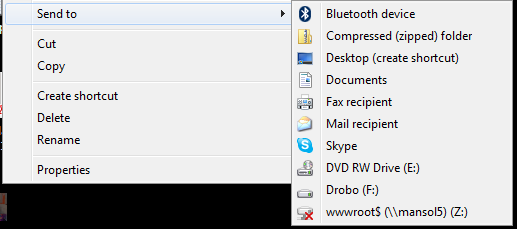
Typical Sendto Menu
When you right click a file or folder on your Windows 7 computer there are several menus available, one of them is the “sendto” menu. This allows you to easily send that file or folder to that program or folder. One important option that is missing in this menu is the notepad program. In this video I demonstrate how to add new items to the sendto menu or specifically the notepad program in the example. You can use it for almost anything a program, network drive even an FTP server.

